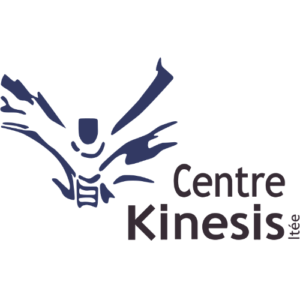Emotional osteopathy: In methodterdisciplinary, used by certain chiropractors and certain dentists, for diagnosis and guidance of patient care, based on the synthesis of several techniques including elements of Chinese medicine. “Applied kinesiology (KA) is the therapeutic use of body movements. Muscle testing is an important tool of the method. Applied kinesiology was established in 1964 by George J. Goodheart, Jr., DC”[1]
In France, it designates a technique of well-being which has the same role as a emotional therapy, with an accompaniment of the person, and which would allow, according to its users, to dissolve the emotional, mental blockages... thanks to a physical dialogue in search of the most adapted solutions. The principle is that the body retains all the information of its history and that the person himself can choose to change to find a balance. It joins the second definition, and recent uses which are in fact registered trademarks:
Specialized kinesiologies : set of methods developed around the world from the work of Dr. John Thie American chiropractor. Touch for health[2], which he developed, is a very simple technique, a synthesis of the information provided by muscle tests, well known to chiropractors, and the circulation of energy in the acupuncture meridians, specific to Chinese medicine. Touch for Health has been taught in more than a hundred countries around the world, and in Europe since the early 1980s.
Hypersens kinesiology[3]: is a method that allows, thanks to a specific muscle test[4], to identify what and the substances to which the person reacts in an exaggerated way, to look for the barriers (physical, emotional, mental, biochemical, etc.) that prevent the person from living normally and balancing the energy system to allow the body to regain better functioning. Thus, the person could again consume or be in contact with what he was very sensitive or intolerant to.
Harmonic Kinesiology : method created in France in line with specialized kinesiologies. Harmonic Kinesiology [5] is a search for the obstacles that are put in place as we move forward on the path of our life. It is through muscle testing, the preferred tool of specialized Kinesiologies[6], that, according to this discipline, the body provides us with the information we need to understand. It must allow the discovery of the imbalances which prevent us from being in harmony “body, mind, spirit”.
THIS THERAPY HAS DEMONSTRATED ITS EFFECTIVENESS
FOR SEVERAL YEARS IN EUROPE!
emotional kinesiology is based on a discovery by Dr. Georges Goodheart (USA). Since our young age, our body records everything and forgets nothing. It has a memory and, by means of the emotional kinesiology, we have learned to ask the body questions and to understand the answers it gives us.
Thanks to emotional kinesiology, the body, best able to know its own needs, not only tells us what is the cause of its weaknesses, but also offers us psycho/energetic corrections to restore balance.
Emotional kinesiology has become a reference tool in the learning sector and in the field of health, it concerns all individuals (big, small and toddlers) concerned about their well-being and determined to rediscover the joy of live who seek to improve and optimize its performance and capabilities.
Emotional kinesiology is used in Europe in schools, companies and clinics (physiotherapy – speech therapy…). Reliable, effective and fast therapy. The results are excellent and estimated at 95%. On average 2 to 5 sessions are enough to solve a problem.
Area of intervention:
Allergies – Migraine – Pain – eczema – asthma – warts – sleep disorder – digestive disorders – intestinal problems – malaise – lack of self-confidence – fears – anxieties – phobias – stress – aggressiveness – anger – nervousness – addictions – (tobacco, chocolate, alcohol) – weight problem – chronic symptoms (hay fever) – recurring life situations (feelings of abandonment, bad luck…) and others.
Nadine Fougeron Mayor

Leave a Reply
Want to join the discussion?Feel free to Contribute!